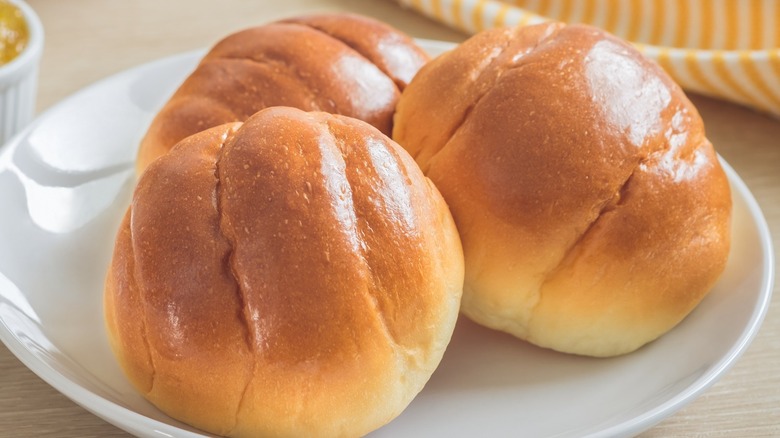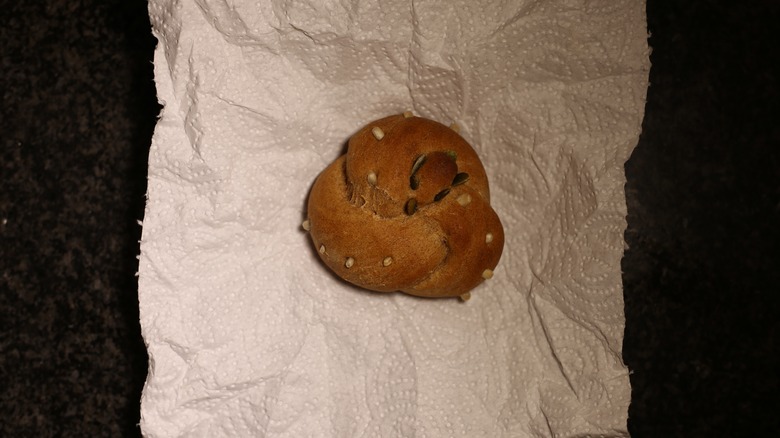How To Microwave Bread Without Turning It Into A Hockey Puck
Bread is made in various ways, shapes, sizes, and flavors, and goes well with several foods and dishes besides being used to make sandwiches. While there is no consensus on what the best kind of bread is, everyone agrees that there's nothing quite like warm bread. If you have ever used a microwave to heat stale or cold bread, chances are that you have been disappointed because it often becomes dry and hard, almost like a hockey puck, and no one wants to break their teeth on bread. If you want your microwave-heated bread to turn out soft and pillowy, all you need is paper towels and some water.
According to Microwave Geek, start by microwaving three tablespoons of water in a microwave-safe bowl on high for one minute. Then, lay at least two paper towels on a microwave-safe plate and place the bread on top of them to prevent it from becoming soggy. Cover the bread loosely with a lightly dampened paper towel and set the plate beside the bowl to allow the steam to revive the bread with moisture again. Microwave it on low for 10 seconds, flip it, and continue heating it for another 10 seconds. It will turn out and remain soft this way, but be careful to let it cool down before you sink your teeth into it.
How to properly store bread
Baking How explains that the secret to ensuring that bread does not dry out when microwaved lies in allowing the starch to slowly reabsorb water at a low temperature. Although the microwave reheats bread faster than other kitchen appliances, Daisy Flour explains that using a preheated oven is preferable if you have an entire loaf, or a stovetop if you have just one or two slices.
As a side note, stop refrigerating bread because it evaporates the bread's moisture and makes it go stale quickly, MasterClass points out. This means you may have to reheat an entire loaf, and really, who wants the trouble? Instead, A Bread Affair suggests wrapping bread in plastic or aluminum foil and sealing it well. This bread can be kept in a dry place away from the sunlight and at room temperature for two days, after which it should be sliced and frozen to prevent it from going stale. When needed again, Healthline says you can thaw your bread in its packaging overnight in the refrigerator or for one to three hours on the counter, and then warm it up again in the microwave. Just follow the aforementioned method and you'll get soft, warm, and fresh-tasting bread every time.

